This article was medically reviewed by Sarah Gehrke, RN, MS. Sarah Gehrke is a Registered Nurse and Licensed Massage Therapist in Texas. Sarah has over 10 years of experience teaching and practicing phlebotomy and intravenous (IV) therapy using physical, psychological, and emotional support. She received her Massage Therapist License from the Amarillo Massage Therapy Institute in 2008 and a M.S. in Nursing from the University of Phoenix in 2013.
There are 9 references cited in this article, which can be found at the bottom of the page.
wikiHow marks an article as reader-approved once it receives enough positive feedback. In this case, several readers have written to tell us that this article was helpful to them, earning it our reader-approved status.
This article has been viewed 321,655 times.
Cold hands and feet are a natural part of how your body regulates its temperature and keeps you alive. When your body detects cold (even if your mind doesn’t register the chill), it begins to redirect more blood to vital internal organs, meaning blood gets diverted away from non-essential extremities like your hands and feet, leaving them icy and stiff.[1] Nonetheless, cold hands can be quite uncomfortable and make simple tasks difficult, and in brisk temperatures, cold hands are even at risk of damage from frostbite. It is, therefore, important to have a few tricks up your sleeve about how to warm your hands up when they are cold, and there are many ways this can be done!
Steps
Increasing Circulation
-
1Get moving. The most effective way to warm your hands is to exercise, which gets the blood pumping to your muscles and skin, warming your entire body.[2]
- Pick up the pace a little if your hands get cold when you are out walking.
- Do some chores to get yourself moving.
- Do some squats, jumping jacks, or other aerobic exercises.
-
2Do hand exercises. Getting up and exercising on the spot isn’t always an option, so if your hands get cold and you can’t increase your heart rate with aerobics, do some hand and foot exercises.
- Wiggle your toes and fingers
- Move your hands in circles
- Clench and release your hands and feet
Advertisement -
3Massage your hands and arms. Another way to get the blood flowing to your hands again is with a massage. Especially in the winter months when skin gets dry, spend some time massaging oil or cream into the skin of your arms, wrists, and hands.[3]
- Don’t forget to massage in between your fingers and your fingertips.
-
4Stay away from cigarettes and caffeine. Although this is a more long-term approach to warming your hands, both smoking and caffeine cause your blood vessels to constrict or narrow, and if there isn’t enough blood flow to your hands, they will get cold.[4]
- In cold months, try white teas instead of coffee to get your mornings going.
Guarding Against Cold Temperatures
-
1Keep your body warm. Because your body reacts to cold by sending warm blood to your internal organs, you can help prevent your hands from getting cold and help warm them up by keeping your core warm and protected. If your body doesn’t think your organs are in danger, it won’t take warming blood away from your hands.
- In cooler weather, layer your clothing, wear a base layer, an insulating layer, and an outer layer that protects from wind and rain.
-
2Wear loose clothing. Tight clothes, socks, and even underwear can actually constrict your blood vessels, meaning blood has a harder time circulating, and this can leave your hands chilly. To combat this, wear loose clothes that are comfortable and provide you with freedom of movement.[5]
- If you are wearing tight clothes and your hands get cold, change into looser clothes as soon as you can.
-
3Wear warm gloves. It makes sense that if your hands are exposed to the cold, then they will get cold, so keep them protected with warm, loose-fitting gloves. Mittens tend to be better than gloves as gloves isolate each individual finger. In many, but not every, circumstance your own fingers can actually heat each other up while the mitten retains warm air around your hand.
- Be sure to get gloves that cover your wrists as well, because a lot of heat can be lost here.
- Put your hands in your pockets if you don’t have gloves, or stick them inside your jacket to keep them out of the breeze.
-
4Eat ginger. Ginger is a thermogenic food, meaning it produces heat when your body metabolizes it.[6] A hot cup of ginger tea could help warm your entire body, including your hands, and holding the warm cup is sure to bring some life back to your hands.
-
5Use your own body heat. No matter how cold it is outside, there are some areas of our bodies that are almost always warm, such as under our armpits and between and under our thighs.
- Put your bare hands directly on the skin in a warm area of your body and leave them there until they warm up.
Adding a Heat Source
-
1Bring instant heat packs or warmers with you. When you are going traveling outside in winter or at night, or going on a cold-weather excursion, you should be prepared with reusable or disposable hot packs that can provide instant heat to warm your hands and body. Good choices include:
- ClickHeat
- Hand Warmers
- Charcoal hand warmers
- UniHeat
- Heat Pax
-
2Have a warm bath. Not only will the warm water heat up your hands as well as your entire body, but it’s also a relaxing way to recover after time spent out in the cold.
- A safe bath temperature should never exceed 110 F (43 C), as this could cause burns, dizziness, low blood pressure, nausea, and vomiting.[7]
- Alternatively, you can run your hands under warm water, or fill a bowl with warm water and soak your hands and wrists.
-
3Blow on your hands and rub them together. The hot air from your lungs will help heat up your hands. Cup your hands to help keep the heat in as long as possible, and then rub your hands together quickly to spread the warmth to the back of your hands.
-
4Warm your hands over a fire or heat source. Fires, heaters, hot car engines, and even running computers give off plenty of heat that you can use to warm yourself. Just be sure you don’t get too close, and don’t touch the heat source.
- If you are wearing gloves, take them off and place your hands directly in front of the heat. Try turning your gloves inside out and placing them close to the heat as well. That way they’ll be nice and toasty when you put them back on.
-
5Don’t drink alcohol. While alcohol may make your skin feel warmer, it actually lowers your overall body temperature. Alcohol causes the blood vessels in your skin to dilate, and this diverts blood away from your vital organs and toward your extremities.
-
6Know when to see a doctor. While having cold hands and feet is natural, if you start to experience numbness, changes to the skin color, hardened or tightened skin, sores and blisters, hair loss, or memory loss,[8] talk to your doctor. There are many health conditions that cause cold hands, including: [9]
- Anemia
- Raynaud’s disease
- Diabetes
- Nerve damage
- Hypothyroidism
- Vitamin B12 deficiency
Expert Q&A
Did you know you can get expert answers for this article?
Unlock expert answers by supporting wikiHow
-
QuestionHi. I work in a cold storage warehouse we are supplied with freezer wear even gloves but for some reason, just my fingertips get really cold within minutes of being in the freezer. What can I do?
 Sarah Gehrke, RN, MSSarah Gehrke is a Registered Nurse and Licensed Massage Therapist in Texas. Sarah has over 10 years of experience teaching and practicing phlebotomy and intravenous (IV) therapy using physical, psychological, and emotional support. She received her Massage Therapist License from the Amarillo Massage Therapy Institute in 2008 and a M.S. in Nursing from the University of Phoenix in 2013.
Sarah Gehrke, RN, MSSarah Gehrke is a Registered Nurse and Licensed Massage Therapist in Texas. Sarah has over 10 years of experience teaching and practicing phlebotomy and intravenous (IV) therapy using physical, psychological, and emotional support. She received her Massage Therapist License from the Amarillo Massage Therapy Institute in 2008 and a M.S. in Nursing from the University of Phoenix in 2013.
Registered Nurse
Warnings
- Avoid hot packs with babies, the elderly, people with diabetes, and people who have a diminished sense of hot and cold.⧼thumbs_response⧽
References
- ↑ https://www.ncbi.nlm.nih.gov/pmc/articles/PMC3051412/
- ↑ https://eric.ed.gov/?id=EJ1021025
- ↑ https://www.ncbi.nlm.nih.gov/pmc/articles/PMC1071543/
- ↑ https://www.healthstatus.com/health_blog/heart-disease-2/medical-cold-hands-feet/
- ↑ http://www.huffingtonpost.com/entry/7-surefire-ways-to-warm-up-cold-hands_us_5654d57ae4b0879a5b0cd88d
- ↑ https://www.ncbi.nlm.nih.gov/pmc/articles/PMC3408800/
- ↑ http://www.healthhype.com/6-health-risks-and-dangers-of-hot-baths.html
- ↑ http://www.prevention.com/health/health-concerns/why-are-my-fingers-and-toes-always-cold
- ↑ http://www.mayoclinic.org/symptoms/cold-hands/basics/causes/sym-20050648
About This Article
To warm your hands, try increasing your circulation by wiggling your fingers and massaging your hands and arms. You can also blow on your hands and rub them together to create warmth. If possible, put on a pair of thick gloves and find a heat source to stand near, like a fire or radiator, to warm up your hands. It can also help to exercise regularly and avoid alcohol, cigarettes, and caffeine during the coldest months! For more tips, like consuming ginger and using portable heat packs, read on!

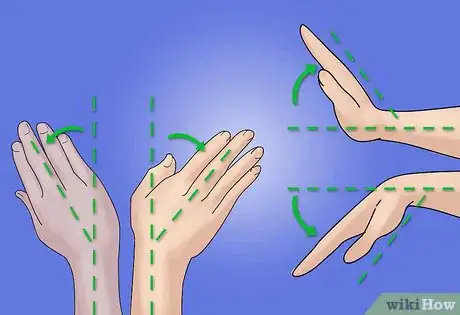




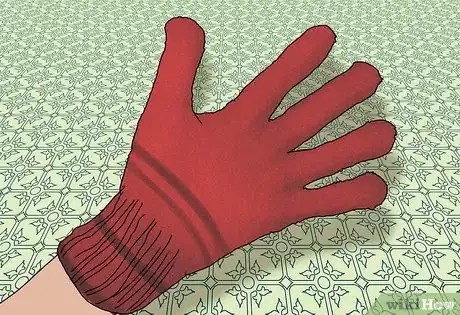
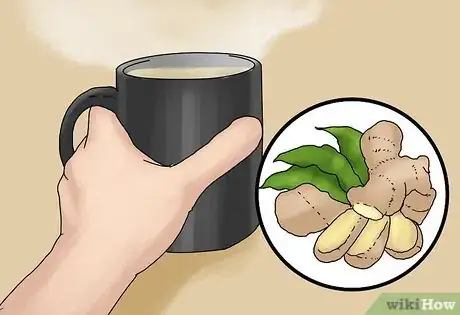





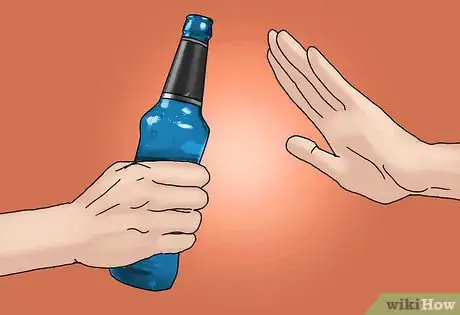


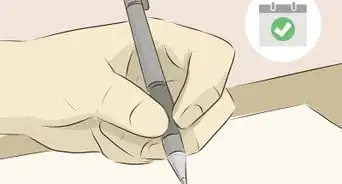

-Step-15-Version-3.webp)























-Step-15-Version-3.webp)


































